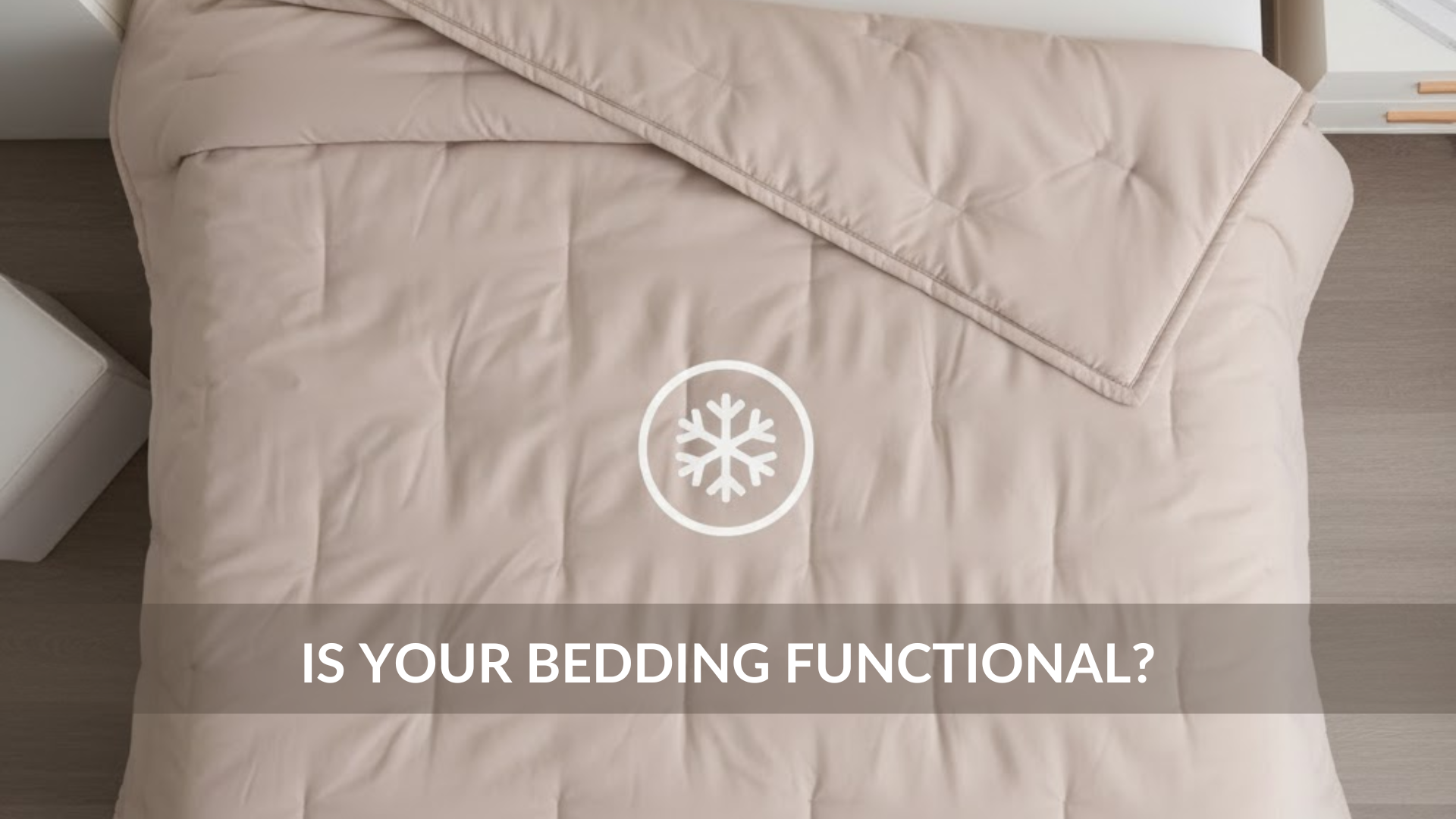We've all scrolled through Pinterest or Instagram, mesmerised by the perfectly styled bedrooms: the artfully draped throws, the pristine white linens, the curated bedside tables. They are, without a doubt, visual masterpieces. They inspire dreams of tranquillity and aesthetic perfection. But here’s the crucial question: once the lights dim and you settle in for the night, is your bedroom working for your sleep, or is it merely a beautiful facade?
The truth is, while visual appeal contributes to a calming atmosphere, the true heroes of a genuinely restorative bedroom are often unseen: real functionality, optimal cooling, superior breathability, and unwavering sleep support. These elements are the bedrock of deep, rejuvenating sleep, far more impactful than the most expensive throw pillow.
Let’s break down why these practical aspects matter more than just a pretty picture:
-
Cooling: The Foundation of Physiological Comfort. Your body naturally lowers its core temperature to initiate and maintain sleep. If your bedroom environment is too warm, or if your bedding traps heat, you are actively fighting your body's natural sleep processes. This isn't just about feeling a bit warm; it can lead to fragmented sleep, frequent awakenings, and a sensation of being overheated. Imagine constantly tossing and turning, kicking off covers, or waking up in a sweat – that's your body struggling to cool down. An effective sleep environment supports this vital temperature regulation, ensuring you stay comfortably cool throughout the night, which is essential for entering and staying in deeper sleep cycles.
-
Breathability: The Unsung Hero of Airflow. Have you ever felt suffocated or clammy under your sheets, even if the room isn't sweltering? That's often a sign of poor breathability. Breathable bedding allows air to circulate freely through the fabric, preventing heat and moisture from getting trapped. This constant exchange of air helps dissipate excess body heat and prevents that sticky, uncomfortable feeling that can disrupt sleep. Materials that lack breathability can create a microclimate around your body, raising your skin temperature and making you feel restless. Good breathability means your bedding feels light and airy, adapting to your body's needs rather than clinging uncomfortably.
-
Sleep Support: Beyond Just a Mattress. While your mattress is undoubtedly the cornerstone of sleep support, the tactile experience of your bedding and pillows plays a significant, often underestimated, role. Are your sheets rough or irritating against your skin, causing microscopic discomfort that prevents full relaxation? Do your pillows offer consistent support that cradles your head and neck without causing pressure points or overheating? "Sleep support" in this context extends to how your bedding interacts with your body. Soft, non-irritating fabrics allow your muscles to fully relax. The right pillow density and material prevent strain. When every element – from the weave of your sheets to the fill of your pillow – is designed to support your body in a comfortable, pressure-free way, you're more likely to drift off quickly and remain undisturbed through the night.
In essence, a truly effective bedroom is an intelligent space, designed to optimise your physiological comfort. It doesn't just look like a sanctuary; it functions as one, actively promoting the deep, restorative sleep that is fundamental to your physical health, mental clarity, and overall well-being. Don't let aesthetics overshadow the profound impact of real functionality. Prioritise how your bedroom feels and performs – your sleep will thank you.



Share:
Why You’re Waking Up Tired and How Your Bedding Could Be the Reason
The Ritual of Rest: 5 Nighttime Habits That Make You Sleep Better and Why They Work